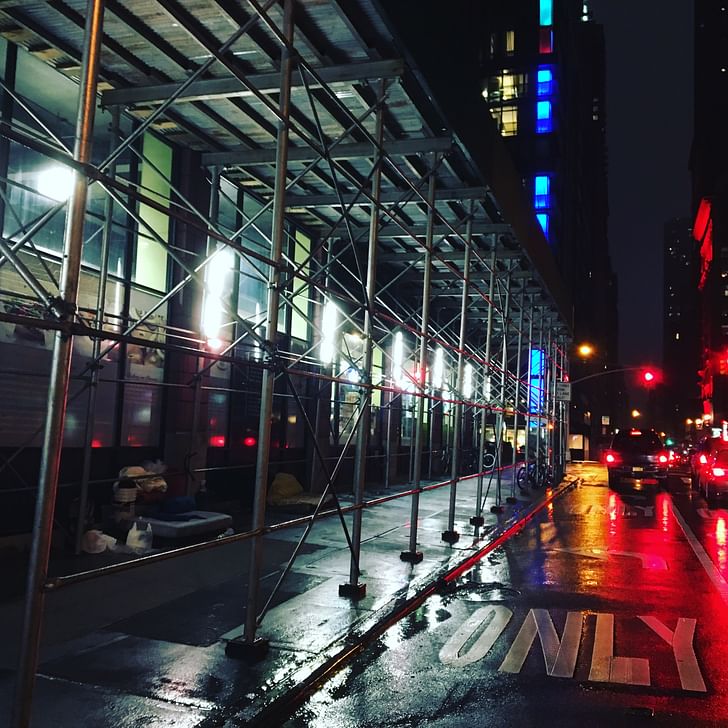

When I think of architecture I think of the Salk Institute in La Jolla by Louis Kahn, Fallingwater in Pennsylvania by Frank Lloyd Wright, the Florence Cathedral by Brunelleschi, The Yamanashi building in Kofu by Kenzo Tange... there are so many great buildings by so many great architects.
The list goes on, but it doesn’t take a world renowned architect to produce architecture. Architecture can be produced by a nobody architect as well. How about the Sydney Opera House? Jorn Utzon’s turtle backs began as a few competition scribbles and evolved into an iconic structure by someone who, until then, was a complete unknown. In fact, you don’t even need to be a classically trained architect to produce architecture either. I am sure we can agree that the work of the talented self-taught Japanese architect, Tadao Ando, is architecture with a capital ‘A’.
So what qualifies as ‘A’rchitecture? It’s not like there is an organization that holds the privilege of stamping architecture on the side of each completed work they deem worthy.
Andrew argued that anything worth discussing in the context of architecture as a whole, becomes architecture itself
Over a short lunch between deadlines a fellow architect and friend of mine, Andrew Gale, pondered this very question with me. We discussed the dialogue that buildings enter into when architecture is discussed. In his mind, anything that enters into this dialogue becomes architecture by default. Andrew argued that anything worth discussing in the context of architecture as a whole, becomes architecture itself. I was inclined to resist this broad brush idea, but over the years this idea has recoded how I look at architecture. In fact, I have been unable to put my finger on a more succinct qualifier for something so elusive.
If we accept this concept as gospel, then what qualifies as architecture expands. To illustrate the point, let us consider something used in the creation of buildings, which you may or may not have considered to be architecture previously; scaffolding.
Scaffolding is relatively inexpensive, temporary, and a means to an end. For many, it is junk or junkitecture at best. However, it is something that is inseparable from the creation of buildings. Think about that for a minute. If you can’t create a piece of architecture without it, where would architecture be? If it is considered architecture for a moment, what does it offer? Scaffolding contains many traits architects have sought to impregnate their buildings with. It is modular, structurally expressive, provides shelter from the elements, and is iconic. In a city as dense as New York City, I often laugh at how far I can move through the city without an umbrella on a rainy day due to the sheer amount of scaffolding that lines the city’s blocks. And, per local building codes, these same temporary roofs must be illuminated at night. This provides helpful wayfinding and keeps the sidewalk below under surveillance by those in eyeshot. It is for these very reasons that the homeless can often be found squatting under them at night where they feel safer than in some abandoned building with questionable structural integrity or on some exposed park bench in the darkness.. It also serves to protect those passing through from the potential debris that could would otherwise fall on them while the construction of architecture proceeds overhead. In addition, scaffolding often changes your perception of the street. Passing through a particular scaffold sheltered sidewalk for months can come as quite a visual shock when it is finally removed. You are forced to update your memory bank with regards to that particular block.
When particularly tall scaffolding is erected, diagonal bracing from the support beams back to the posts criss cross along a linear perspective reminiscent of E. Fay Jones’ Thorncrown Chapel, or Piano + Rogers’ Centre Pompidou in Paris.
When buildings are erected or merely cleaned, the added scaffolding appears as a protective exoskeleton, and telegraphs the massing of the building. In numerous countries throughout the world, most notably in Asia, scaffolding is made from strong and flexible bamboo rather than steel. The great wall of China itself was erected using bamboo scaffolding.
The limitless kit of parts expands and contracts like a living organism over time as various portions of a building are erected or demolished. We have been trained to think of architecture as something that is drawn, built from these drawings, and then remains until it is either modified or demolished.
But what about architecture that is highly versatile, requires no drawings due to it’s self evident assembly, can assume many different forms, and is erected and dismantled hundreds of times during it’s lifetime? Is this not worthy of being considered architecture?
Think about this the next time you forget your umbrella.
Christopher Alker is a New York City-based Architect registered in New York and Florida with a focus on contingent architecture. He studied urban design and theory while attending the University of Texas at Austin, and immediately followed his studies with an apprenticeship to a master ...
4 Comments
On a related note, have you visited Scaffolding curated by Greg Barton?
Unfortunately I missed this show, but case-in-point.
Penelope Green wrote an interesting piece in the NYTimes on Scaffolding yesterday. You can find it here: https://www.nytimes.com/2020/01/02/style/scaffolding-new-york-city.html?action=click&module=MoreIn&pgtype=Article®ion=Footer&action=click&module=MoreInSection&pgtype=Article®ion=Footer&contentCollection=Pop%20Culture
Also reported in the news here: https://archinect.com/news/article/150176710/new-york-city-and-its-unloved-sidewalk-sheds
Block this user
Are you sure you want to block this user and hide all related comments throughout the site?
Archinect
This is your first comment on Archinect. Your comment will be visible once approved.